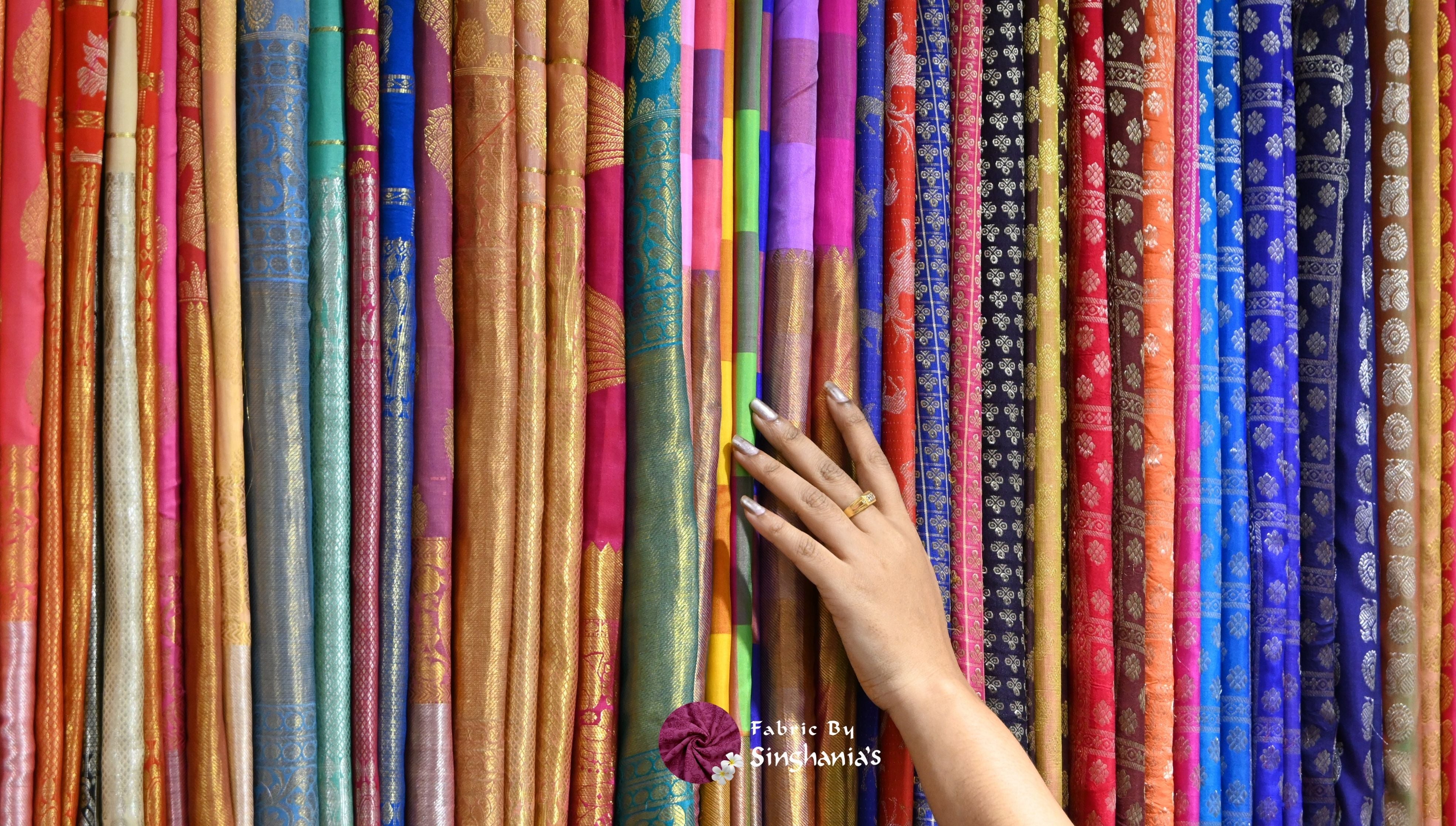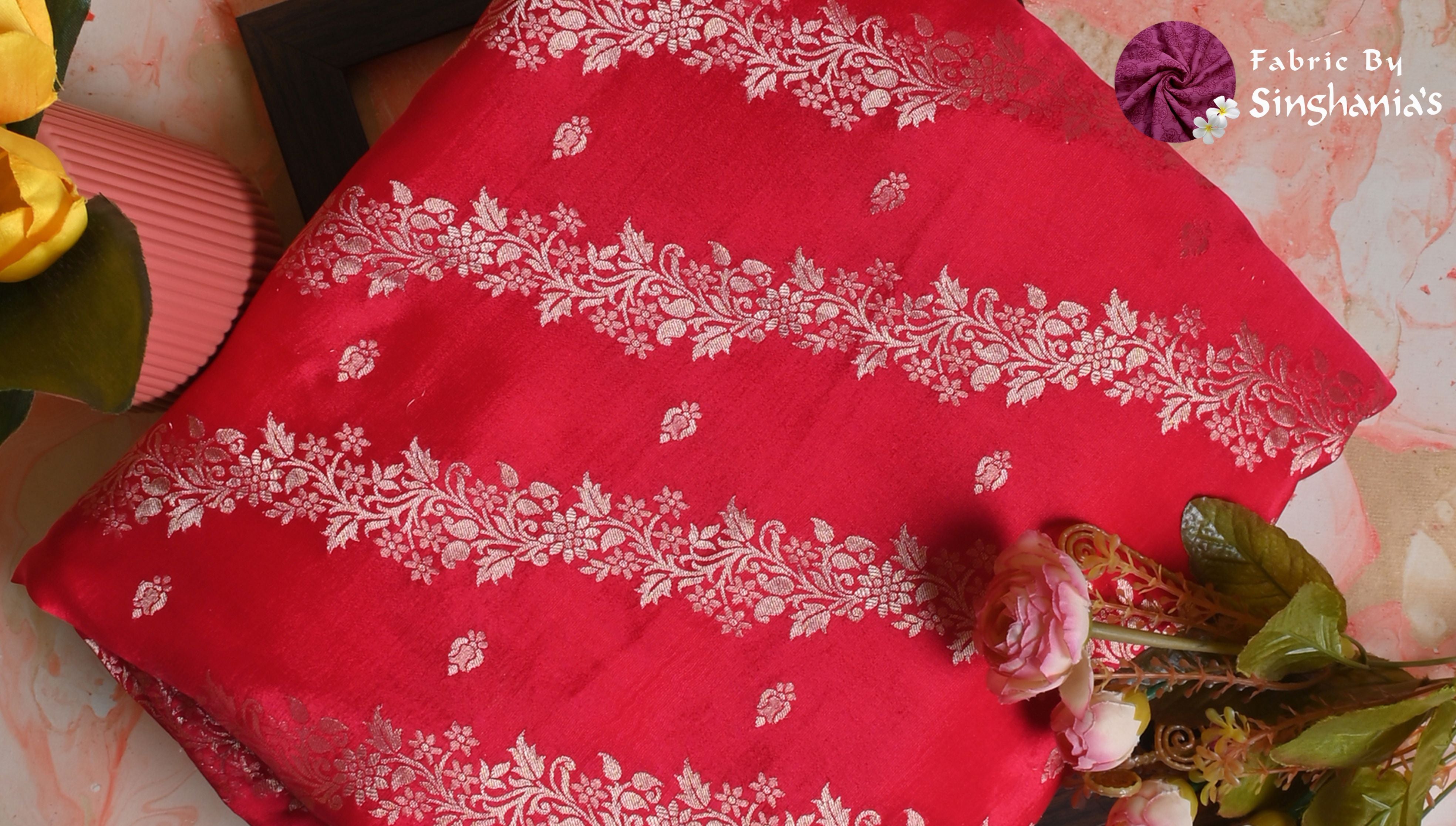When we think about clothing, we often focus on style, fit, and occasion. But did you know that the textures and colors of the fabrics you choose can significantly impact your mood and overall wellbeing? We will explore the fascinating psychology behind fabric textures and colors and how they can influence our emotions and behavior.
The Power of Fabric Textures
Fabric texture refers to the surface quality of a fabric, which can be smooth, rough, soft, or stiff. Different textures can evoke different emotional responses. Let's break down some common fabric textures and their psychological impacts:
1. Smooth Textures: Fabrics like silk, satin, and cotton have smooth textures. These fabrics are often associated with luxury and comfort. Wearing smooth fabrics can make you feel more relaxed, elegant, and confident. They’re perfect for special occasions or when you want to pamper yourself.
2. Rough Textures: Fabrics like tussar, rawsilk, and wool are examples of rough textures. These materials can evoke feelings of ruggedness, durability, and strength. Wearing rough-textured fabrics can make you feel more grounded and resilient. They’re great for casual, everyday wear or outdoor activities.
3. Soft Textures: Fabrics such as velvet are incredibly soft. These fabrics are associated with warmth, comfort, and nurturing. Wearing soft, textured fabrics can make you feel cozy and secure, making them ideal for relaxing at home or during the colder months.
4. Stiff Textures: Fabrics like organza and tissue organza have a stiff texture. These fabrics often convey formality and structure. Wearing stiff fabrics can make you feel more disciplined and poised. They’re suitable for formal events or professional settings.
The Influence of Fabric Colors
Colors are powerful psychological tools that can influence our emotions and perceptions. Different colors can have varying effects on our mood. Here's a look at some common colors and their psychological impacts:
1. Red: Red is a bold and stimulating color. It is often associated with passion, energy, and excitement. Wearing red can make you feel more confident and assertive. It's a great choice for events where you want to stand out and make a strong impression.
2. Blue: Blue is a calming and soothing color. It is linked to feelings of tranquility, trust, and stability. Wearing blue can help you feel more relaxed and at peace. It's ideal for situations where you need to stay calm and composed, such as job interviews or exams.
3. Yellow: Yellow is a bright and cheerful color. It is associated with happiness, optimism, and creativity. Wearing yellow can lift your spirits and make you feel more joyful and energetic. It's perfect for social gatherings or creative endeavors.
4. Green: Green is a refreshing and harmonious color. It represents nature, balance, and growth. Wearing green can make you feel more refreshed and rejuvenated. It's a great choice for outdoor activities or when you need a mental reset.
5. Black: Black is a sophisticated and powerful color. It is often associated with elegance, mystery, and authority. Wearing black can make you feel more confident and in control. It's suitable for formal events or when you want to convey a sense of strength.
6. White: White is a clean and pure color. It symbolizes simplicity, innocence, and clarity. Wearing white can make you feel more open and focused. It's ideal for settings where you need to project a sense of simplicity and freshness.
Combining Textures and Colors for Maximum Impact
The combination of fabric textures and colors can amplify psychological effects. Here are a few tips on how to pair textures and colors to achieve the desired emotional impact:
1. Elegant and Confident: Combine smooth textures with bold colors like red or black. A smooth silk dress in red can make you feel both elegant and confident, perfect for a night out or an important event.
2. Calm and Composed: Pair soft textures with soothing colors like blue or green. A soft satin three-piece set in blue can help you stay calm and composed during stressful situations.
3. Cheerful and Energetic: Mix bright colors with playful textures. A yellow rawsilk blouse with a georgette fabric saree in bottle green will boost your mood and make you feel more energetic and happy.
4. Grounded and Resilient: combine rough textures with earthy colors. A green tussar kurta can make you feel more grounded and resilient, making it ideal for outdoor adventures.
The Science Behind Fabric Psychology
The psychological impact of fabrics is rooted in sensory perception and cultural associations. Our brain interprets the sensory input from different textures and colors, triggering emotional responses based on past experiences and learned associations.
Sensory Perception: The physical sensations we experience when touching or wearing different fabrics send signals to our brain, influencing our emotional state. For example, the smoothness of silk can trigger feelings of luxury, while the roughness of wool can evoke a sense of warmth and protection.
Cultural Associations: Different cultures have unique associations with colors and textures, influencing how we perceive and react to them. For instance, white is associated with purity in many Western cultures, while in some Eastern cultures, it is linked to mourning.Understanding the science behind fabric psychology can help you make more informed choices when selecting your wardrobe, ensuring that your clothing not only suits the occasion but also supports your emotional wellbeing.
Why Fabrics by Singhania's Are the Best Choice
Fabric by Singhania's stands out for its exceptional quality, diverse range, and attention to detail. Here are a few reasons why Singhania's fabrics are the best choice for achieving the desired psychological impact through textures and colors:
1. Superior Quality: Fabric by Singhania's is crafted with the finest materials, ensuring that each piece is of the highest quality. This attention to detail guarantees that the fabrics feel luxurious and comfortable, enhancing your overall experience.
2. Wide Range of Options: Fabric by Singhania's offers an extensive selection of fabrics in various textures and colors, allowing you to find the perfect match for any mood or occasion. Whether you need a smooth silk saree or a cozy cashmere shawl, Fabrics by Singhania's has it all.
3. Expert Craftsmanship: Each fabric from Fabric by Singhania's is carefully crafted by skilled artisans, ensuring that every piece is unique and beautifully made. This expert craftsmanship adds a touch of elegance and sophistication to your wardrobe.
4. Versatility: Fabric by Singhania's is versatile and suitable for a wide range of uses, from traditional attire to modern fashion. This versatility allows you to experiment with different textures and colors, creating outfits that reflect your personality and mood.
Fabric by Singhania's provides endless possibilities for combining textures and colors to create outfits that not only look great but also make you feel fantastic.
By choosing Fabric by Singhania's, you can confidently express yourself through your wardrobe, knowing that you are wearing the best fabrics available.







